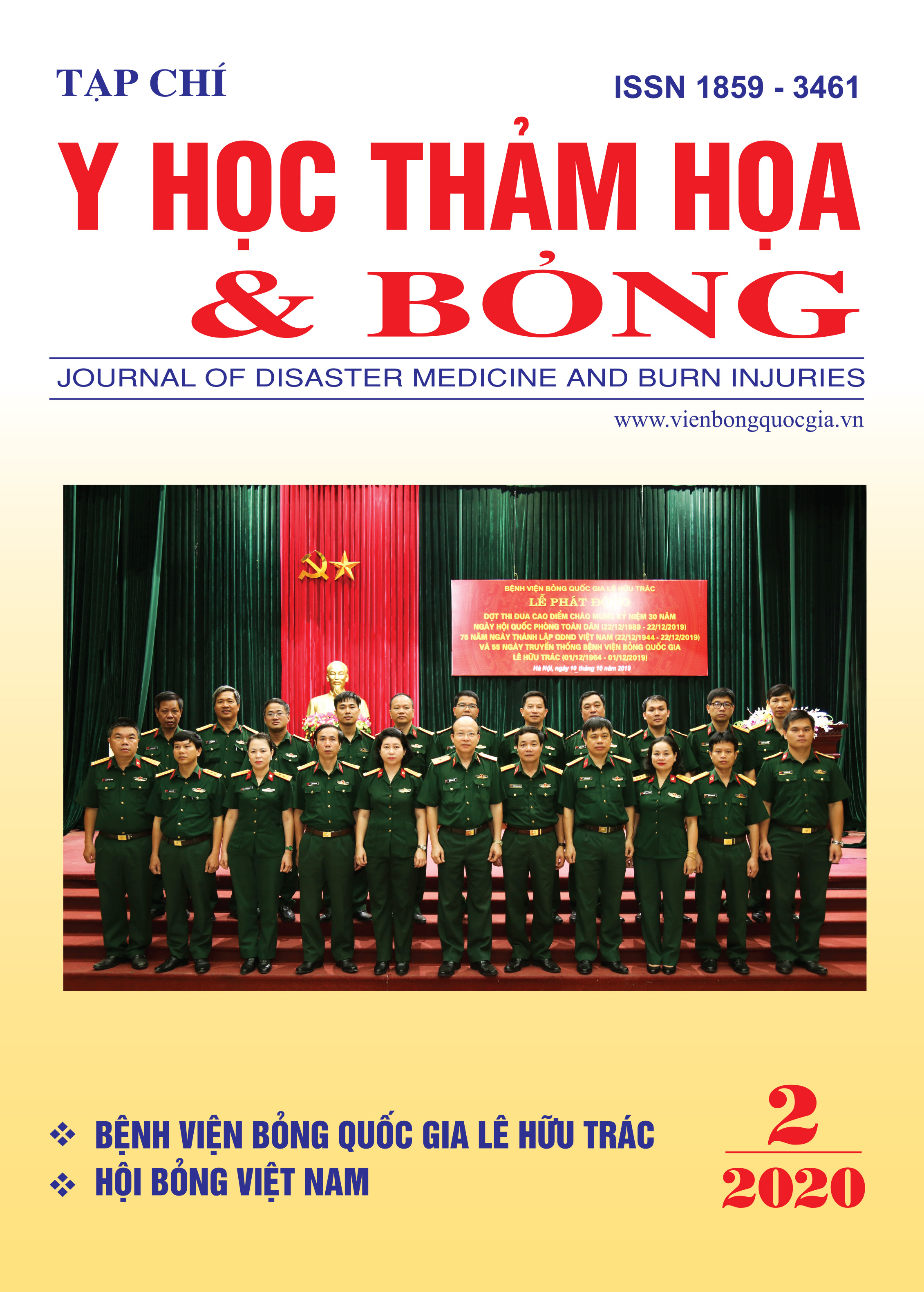Studying harvest and preserve allograft skin in 85% Glycerol for wound, burn treatment
Main Article Content
Abstract
Since the early 1980s, the European skin bank has been studying the use of 85% Glycerol in preserving allograft skin. The first clinical research about Glycerol-preserved allograft (GPA) was performed in 1984 at the Burn Center, Beverwijk Red Cross Hospital, Netherlands. Since 1991, GPA became the “gold standard” for temporary burn wound coverage.
In this study, we have established a procedure to harvest and preserve the allograft skin in 85% Glycerol and apply it to make 200 pieces of GPA. Follow-up showed that 85% Glycerol solution has anti-bacterial and fungal effects, after 3 months of storage, test for bacteria, fungi all gave result negative; at the same time, the morphological structure of GPA does not change during storage. This is the basis for using the Glycerol preserved skin allograft samples to treat wounds and burns.
Article Details
Keywords
Skin allograft, Glycerol preserved allograft (GPA), microorganism, morphology
References
2. Đinh Văn Hân (2011), “Nghiên cứu thu hồi, xử lý và bảo quản tươi da đồng loại để điều trị bỏng sâu diện tích rộng”; Tạp chí Y học thảm họa & Bỏng, số 3, tr. 23-31.
3. Đinh Văn Hân (2012), “Nghiên cứu ban đầu về bảo quản da đồng loại trong glycerol 85% để điều trị vết thương bỏng sâu” Tạp chí Y học thảm hoạ và Bỏng.4: 28-34.
4. Đinh Văn Hân, Ngô Ngọc Hà (2014), “Đánh giá sự thay đổi về khía cạnh vi sinh và hình thái mô tế bào của da đồng loại trong quá trình thu hồi, xử lý và bảo quản lạnh sâu”, Tạp chí Y học thảm họa và Bỏng, số 1, trang 49-58.
5. Lê Năm (2003) Nghiên cứu sử dụng ghép da đồng loại lấy từ người thân điều trị bệnh nhân bỏng sâu diện tích rộng, Báo cáo Tổng kết đề tài cấp Bộ Quốc Phòng.
6. Lê Năm (2014), Nghiên cứu xây dựng quy trình thu nhận, xử lý và bảo quản một số loại mô ghép; Báo cáo Tổng kết đề tài độc lập cấp Nhà nước.
7. Luật Hiến, lấy, ghép mô, bộ phận cơ thể người và hiến, lấy xác; Số 75/2006/QH11 ngày 29 tháng 11 năm 2006.
8. Lê Thế Trung (2003), Bỏng - những kiến thức chuyên ngành, Nhà xuất bản y học, Hà Nội.
9. Astegiano S, Alotto D, Castagnoli C et all (2012), “In vitro CMV-infection model in fresh and glycerolized skin graft”, New Microbiol. 2012 Jan; 35 (1): 67-71.
10. Balasubramani M., Kumar T. R. and Babu M. (2001), “Skin substitutes: a review”. Burns.27 (5): 534-544.
11. Brusselaers N., Pirayesh A., Hoeksema H.. et al. (2010), “Skin replacement in burn wounds”, Journal of Trauma and Acute Care Surgery.68 (2): 490-501.
12. Cameron P. U., Pagnon J. C., van Baare J.. et al. (2000), “Efficacy and kinetics of glycerol inactivation of HIV‐1 in split skin grafts”, Journal of medical virology.60 (2): 182-188.
13. Kua EH, Goh CQ, Ting Y et all (2012), “Comparing the use of glycerol preserved and cryopreserved allogenic skin for the treatment of severe burns: differences in clinical outcomes and in vitro tissue viability”, Cell Tisue Bank, 13(2): 269-79.
14. Liangpeng Ge, Zhenggen Huang and Hong Wei (2011), “Skin Grafts Preservation”, In Skin Grafts - Indication, Application and Current Research; Publisher InTech.
15. Pianigiani E et all (2005), “Skin bank organization”, Clin Dermatol, 23(4): 353-6.
16. Pianigiani E et all (2010), “Processing efficacy in relation to microbial contamination of skin allograft from 723 donors”. Burns, Vol. 36, Issue 3: 347-351.
17. Richters C., Hoekstra M., Van Baare J.. et al. (1996), “Morphology of glycerol-preserved human cadaver skin”, Burns.22 (2): 113-116.
18. Tognetti L, Pianigiani E, Ierardi F et al. (2017), “Current insights into skin banking: storage, preservation and clinical importance of skin allografts”, Journal of Biorepository Science for Applied Medicine, Volume 5, pp. 41 - 56.
19. Van Baare J., Buitenwerf J., Hoekstra M.. et al. (1994), “Virucidal effect of glycerol as used in donor skin preservation”, Burns.20: S77-S80.
20. Van Baare J., Cameron PU, Vardaxis N et all (1998), “Comparison of glycerol preservation with cry preservation methods on HIV-1 inactivation”, J Burn Care Rehabil, 19 (6): 496-500.
21. Van Baare J, Ligtvoet EE, Middelkoop E (1998), “Microbiological evaluation of glycerolized cadaveric donor skin”, Transplantation, 65(7): 966-70.
22. Vloemans A., Middelkoop E. and Kreis R. (2002) “A historical appraisal of the use of cryopreserved and glycerol-preserved allograft skin in the treatment of partial-thickness burns”. Burns.28: 16-20.
23. Zidan SM, Eleowa SA (2014), “Banking and use of glycerol preserved full-thickness skin allograft harvested from body contouring procedures”, Burns, 40 (4): 641-7.


